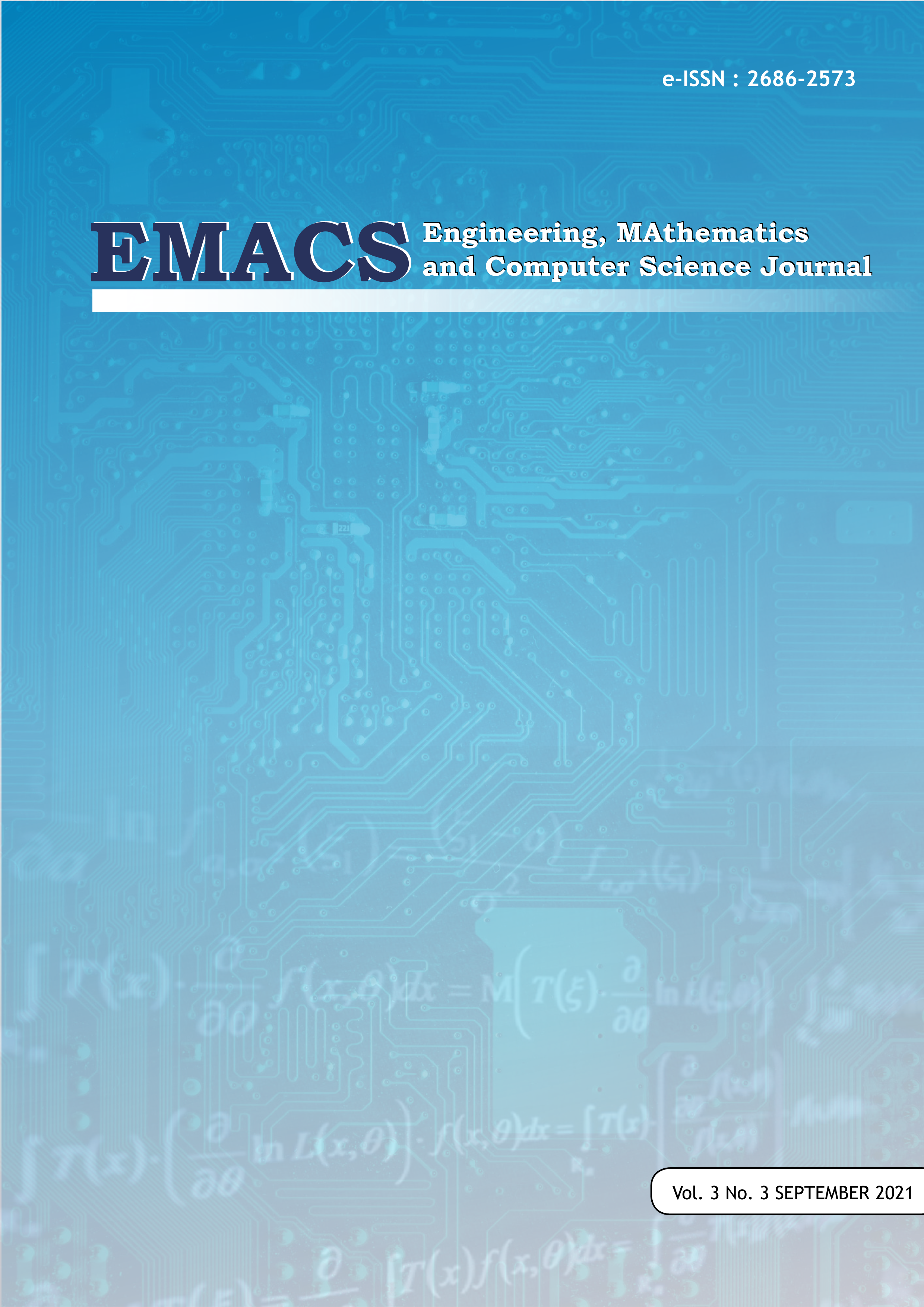Analisis Curah Hujan di Indonesia untuk Memetakan Daerah Potensi Banjir dan Tanah Longsor dengan Metode Cluster Fuzzy C-Means dan Singular Value Decompotition (SVD)
DOI:
https://doi.org/10.21512/emacsjournal.v3i3.7428Keywords:
Flood, Rainfall, Fuzzy C-Means, SVD, LandslideAbstract
One of the climate changes impact is extreme rainfall. Extreme rainfall can cause some hydrometeorological disasters, especially floods and landslides. In 2016, BNPB recorded that there were 2,342 disaster events in Indonesia, 92% of which were disasters dominated by floods, landslides, and cyclones. There were 766 floods, 612 landslides, and 74 combinations of both. In this case, clustering is one of the important method to identify groups of areas with similar characteristics of high or low rainfall. Another analysis that can be applied is the identification of the extreme rainfall and the determination of dominant rainfall pattern using Singular Value Decomposition (SVD) for each region in Indonesia. The data was taken from Indonesia’s rainfall data in January 1998 - March 2017, obtained from the Tropical Rainfall Measuring Mission (TRMM) meteorological satellite, with 12,834 observation units. The highest average rainfall in Indonesia in December is 290,26 mm/month. Rainy season is predicted from November to April because they have the highest average rainfall. The SVD analysis formed four dominant rainfall patterns in Indonesia with a variance of 25.59%, where Papua and West Papua are the regions with the highest rainfall. The area around the Indian Ocean is the area with the most extreme rainfall events compared to other regions. Using Fuzzy C-means, three clusters can be formed, with criteria for areas of high, medium, and low rainfall. Based on the results of the analysis, the area has the potential for flooding and landslides due to high rainfall, so that preventive and mitigation efforts against the risk of flooding and landslides can be treated better.
References
Anton, Howard (2000). “Elementary Linear Algebraâ€, Eighth Edition. John Wiley, New York.
Dwi, Made.,Wahyu, Tri., & Syahputra, M Rido. (2014). Bukit Kotabang : MEGASAINS.
Gorunescu, Florin. (2011). Data Mining: Concepts, Models, and Techniques. Berlin : Springer.
Hair, J. F. Jr. (1995). Multivariate Data Analysis with Readings, 4th edition. Madison : Pearson Prentice-Hall.
Ihwan, Andi. (2010). Pemodelan Curah Hujan Bulanan Berdasarkan Metode Least Square non Linear. Pontianak: Prodi Fisika FMIPA Universitas Tanjungpura.
Kusumadewi, S., (2003). Artificial Intellegence (Teknik dan Aplikasinya), Yogyakarta: Graha Ilmu.
Puspitasari, Novianti & Haviluddin. (2016). Penerapan Metode K-Means dalam Pengelompokan Curah Hujan di Kalimantan Timur. Samarinda : Universitas Mulawarman.
Velmurugan, V. dan Santhanan, T., (2010). Clustering Mix Data Point Using Fuzzy CMeans Clustering Algorithm for Performance Analysis, International Journal on Computer Science and Engineering (IJCSE),Vol.02 , No.09, 2010, 3100-3105.
Downloads
Published
How to Cite
Issue
Section
License
Copyright (c) 2021 Engineering, MAthematics and Computer Science (EMACS) Journal

This work is licensed under a Creative Commons Attribution-ShareAlike 4.0 International License.
Authors who publish with this journal agree to the following terms:
- Authors retain copyright and grant the journal right of first publication with the work simultaneously licensed under a Creative Commons Attribution License - Share Alike that allows others to share the work with an acknowledgment of the work's authorship and initial publication in this journal.
- Authors are able to enter into separate, additional contractual arrangements for the non-exclusive distribution of the journal's published version of the work (e.g., post it to an institutional repository or publish it in a book), with an acknowledgment of its initial publication in this journal.
- Authors are permitted and encouraged to post their work online (e.g., in institutional repositories or on their website) prior to and during the submission process, as it can lead to productive exchanges, as well as earlier and greater citation of published work.
USER RIGHTS
All articles published Open Access will be immediately and permanently free for everyone to read and download. We are continuously working with our author communities to select the best choice of license options, currently being defined for this journal as follows: Creative Commons Attribution-Share Alike (CC BY-SA)





